The movement ushered in an era during which painting transcended its traditional role as a window into the world and instead became a window into the artist’s mind and soul.
Post-Impressionism is an art movement that developed in the 1890s in France. It is characterized by a subjective approach to painting, as artists opted to evoke emotion rather than realism in their work. While their styles, therefore, wildly varied, their paintings share some similar qualities such as symbolic motifs, unnatural colour and painterly brushstrokes.
It encompasses a wide range of distinct artistic styles sharing the common motivation of responding to the optical effects of Impressionism.
The stylistic variations assembled under the general banner of Post-Impressionism range from the scientifically oriented Pointillism of Georges Seurat to the lush Symbolism of Paul Gauguin, but all concentrated on the subjective vision of the artist.
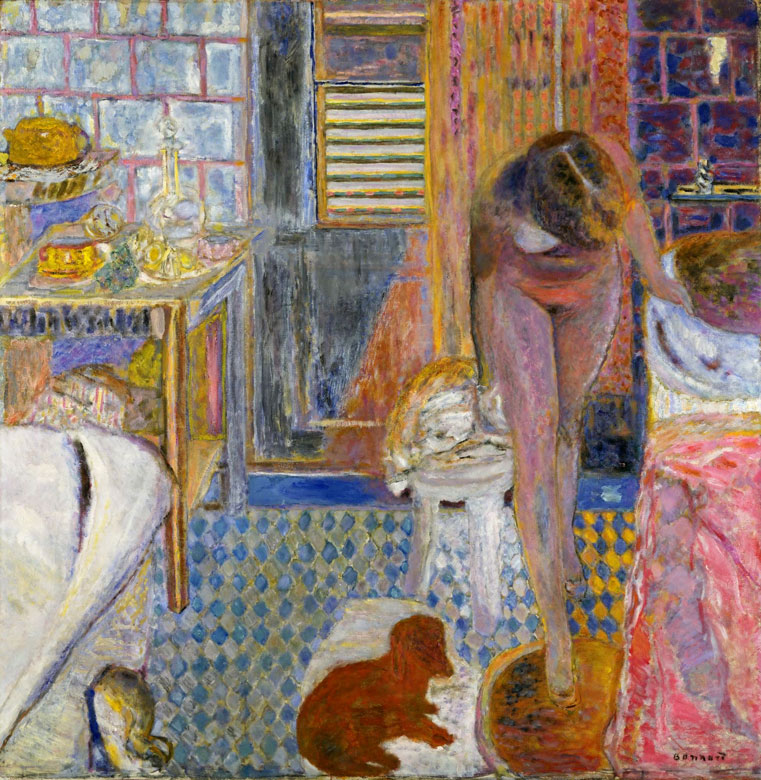
Their far-reaching aesthetic impact influenced groups that arose during the turn of the 20th century, like the Expressionists, as well as more contemporary movements, like the identity-related Feminist Art.
The term is usually confined to the four major figures who developed and extended impressionism in distinctly different directions: Paul Gauguin, Vincent van Gogh, Georges Seurat and Paul Cezanne.
- Gauguin retained intense light and colour but rejected painting from nature and reintroduced imaginative exotic subject matter.
- Van Gogh painted from nature but developed a highly personal use of colour and brushwork directly expressing emotional response to subject and his inner world.
- Seurat put impressionist painting of light and colour on a scientific basis , inventing his own style, Pointillism or Divisionism.
- Cezanne retained the fundamental doctrine of painting from nature but with added almost cubist rigour.
Post-impressionism as a term was first used by British art critic Roger Fry in 1910 when he organised the exhibition “Manet and the Post-Impressionists”.
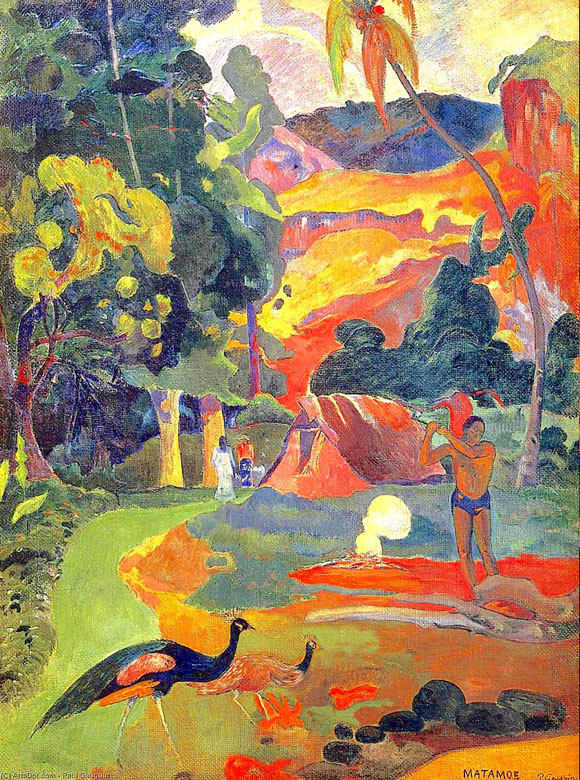
Key ideas of Post-Impressionism
Symbolic and highly personal meanings were particularly important to Post-Impressionists such as Paul Gauguin and Vincent van Gogh. Rejecting interest in depicting the observed world, they instead looked to their memories and emotions in order to connect with the viewer on a deeper level.
Structure, order and optical colour effects dominated the aesthetic vision of Post-Impressionists like Paul Cezanne, Georges Seurat and Paul Signac.
Rather than merely represent their surroundings, they relied upon the interrelations of colour and shape to describe the world around them.
Despite the various individualised styles, most Post-Impressionists focused on abstract form and pattern in the application of paint to the surface of the canvas.
Their early leanings toward abstraction paved the way for the radical modernist exploration of abstraction that took place in the early-20th century.
Critics grouped the various styles within Post-Impressionism into two general, opposing stylistic trends: on one side was the structured, or geometric style that was the precursor to Cubism, while on the other side was the expressive, or non-geometric art that led to Abstract Expressionism.
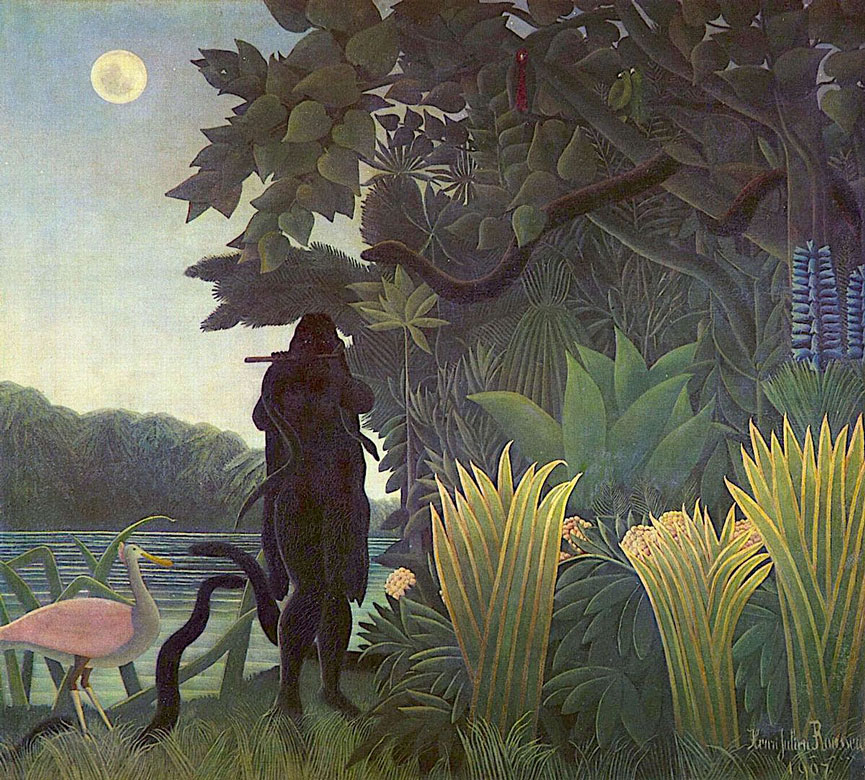
Impressionism and the Rise of Post-Impressionism
By the last Impressionist exhibition in 1886, younger artists and critics demanded a shift in the focus of representational arts.
They felt the Impressionists allowed their preoccupations with technique and the effects of natural light to overshadow the importance of subject matter.
Eventually these dissenting artists became known as the Post-Impressionists, a term that grouped together widely varying individual artistic styles. Indeed, many of the movement’s foremost figures were rivals in method and approach.
Gauguin and Seurat both detested one another and shared a low opinion of each other’s styles, and while van Gogh revered the work of the Impressionist Edgar Degas and fellow Post-Impressionist Henri Rousseau, he was skeptical of Cézanne‘s rigorously ordered style.
While Paris was unquestionably the fount of Post-Impressionism, the emphasis on symbolic and expressive content meant that the life of the city no longer was the dominant subject for artists.
Subsequently, many painters developed their individual aesthetic style outside of Paris. Cézanne spent most of his career in Provence, Van Gogh arrived at his mature style in Arles and, in an infamous renunciation of Paris, Gauguin expatriated to the island of Tahiti.
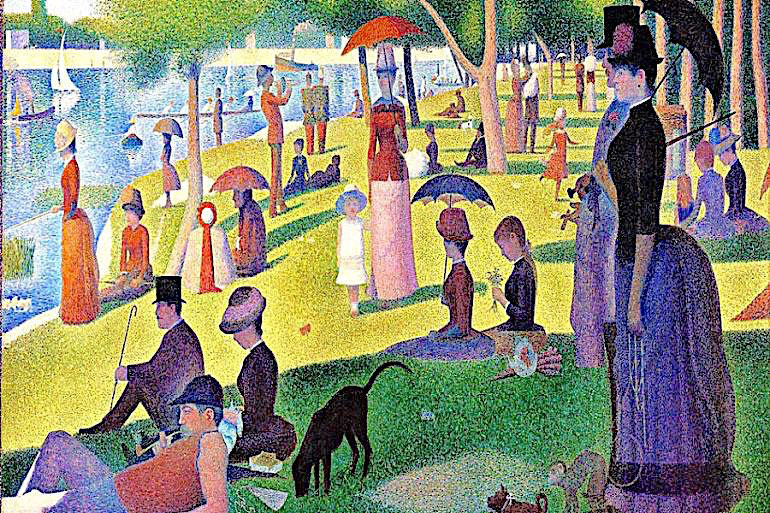
Seurat and Pointillism
The earliest herald of the new trend that broke with Impressionism was Georges Seurat. He developed the style of painting known as Pointillism, which refers to the use of a point, or dot, as the basis for the construction of a painting. The larger stylistic movement of Seurat‘s followers is known as Neo-Impressionism, but the movement is also identified as Divisionism.
Seurat explored a new, scientific approach to the representation of colour and extended the Impressionists’ interests in optics.
The marks that made up the painting were each executed in a singular colour.
Those individual marks and colours then visually blended in the eye of the viewer, as dictated by the prevailing tenets of then-current colour-theory.
In works such as A Sunday Afternoon, Seurat applied his brush in dense fields of tiny dots in order to mimic the vivid and vibrating appearance of natural light, which is also the result of the blending of the various colours of the spectrum.
Paul Signac closely followed in Seurat‘s footsteps in these explorations.
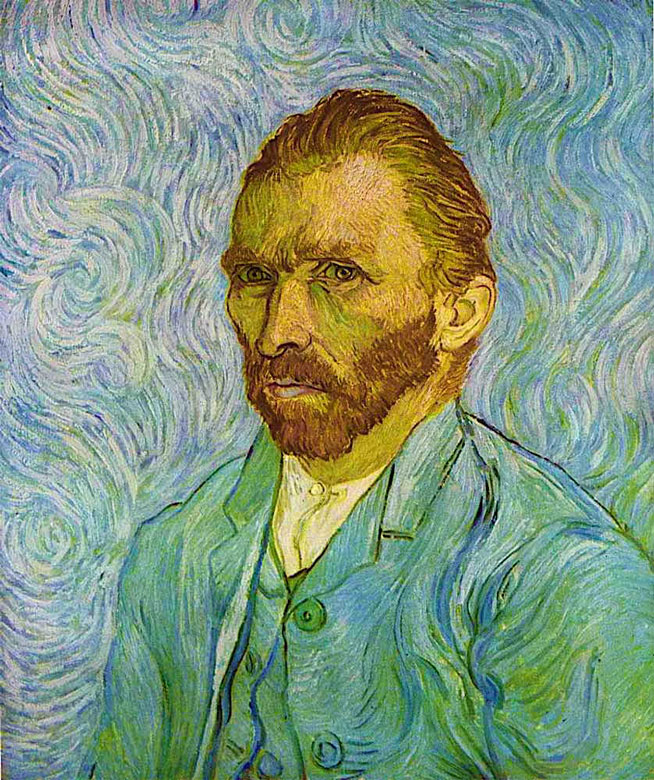
Van Gogh and Japonisme
Vincent van Gogh relied upon saturated colours and broad brushstrokes to evoke the inner turmoil of the artist.
Along with Gauguin, he experimented with new approaches to painting and rejected academic representation, fine finish, and the Impressionists’ fixation on optical effects.
He was influenced by a variety of sources, not the least of which was his love of the stylised representations of Japanese Ukiyo-e prints.
In the late-19th century, an influx of Japanese crafts and art into the European market initiated Japonisme, the European interpretation of Japanese artistic styles in Western art objects.
Similar influences are also evident in the work of Toulouse-Lautrec. He was an observer of the cabaret world with a unique perspective; he was born into the French nobility, but was physically disabled, and thus embodied the perspective of both an insider and an outsider. His unique view of Parisian nightlife resulted in paintings and lithographs of dance halls and cabarets that relied upon the strong outlines and flat planes of Japanese art.
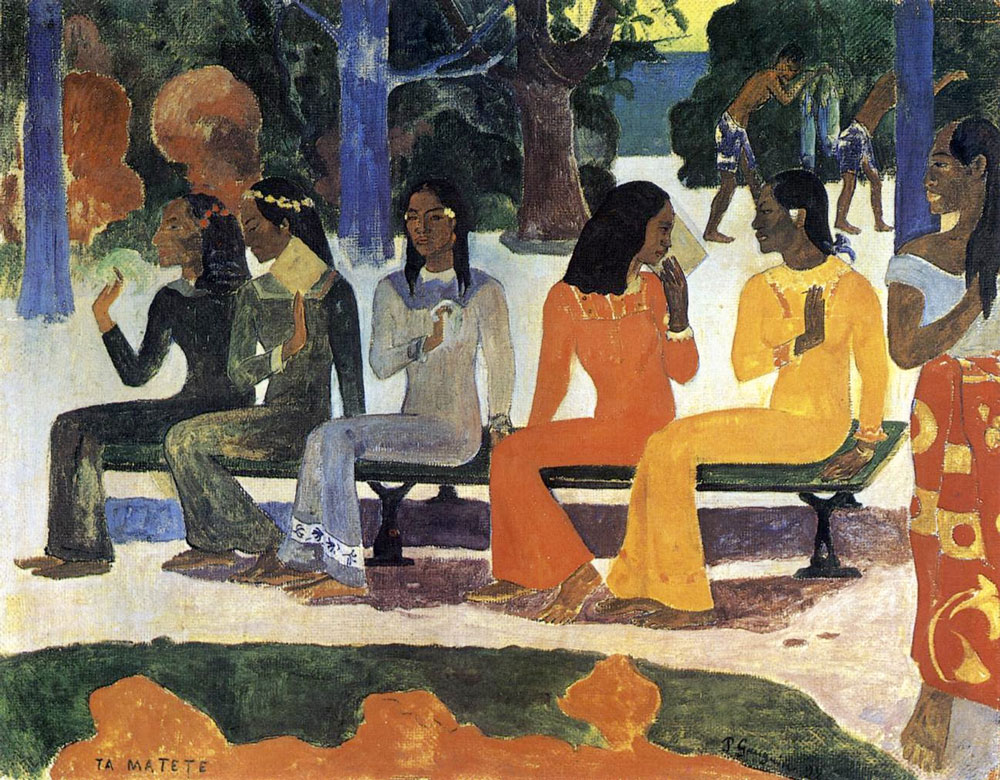
Gauguin and Synthetism
In the fall of 1888, Van Gogh and Gauguin shared a small apartment and studio space in Arles (south of France). During months, the two artists forged a rocky but mutually beneficial relationship. While they both shared an interest in symbolic content and images that were abstracted from their natural appearances,
Gauguin developed these ideas further in his theory of Synthetism. According to its tenets, the final, visual form is determined by a synthesis of the outward appearance of the natural form, the artist’s feelings about the subject matter and the aesthetic considerations of colour, line, and form.
In his work, Gauguin frequently discarded shading, modelling and single-point perspective. Instead, he used pure colour, strong lines and flat two-dimensionality to elicit a visceral emotional impact.
These works were also oftentimes derived from memory or imagination. They expressed a strong connection with the subject matter that inspired the work, whether that subject derived from religion, literature or mythology.
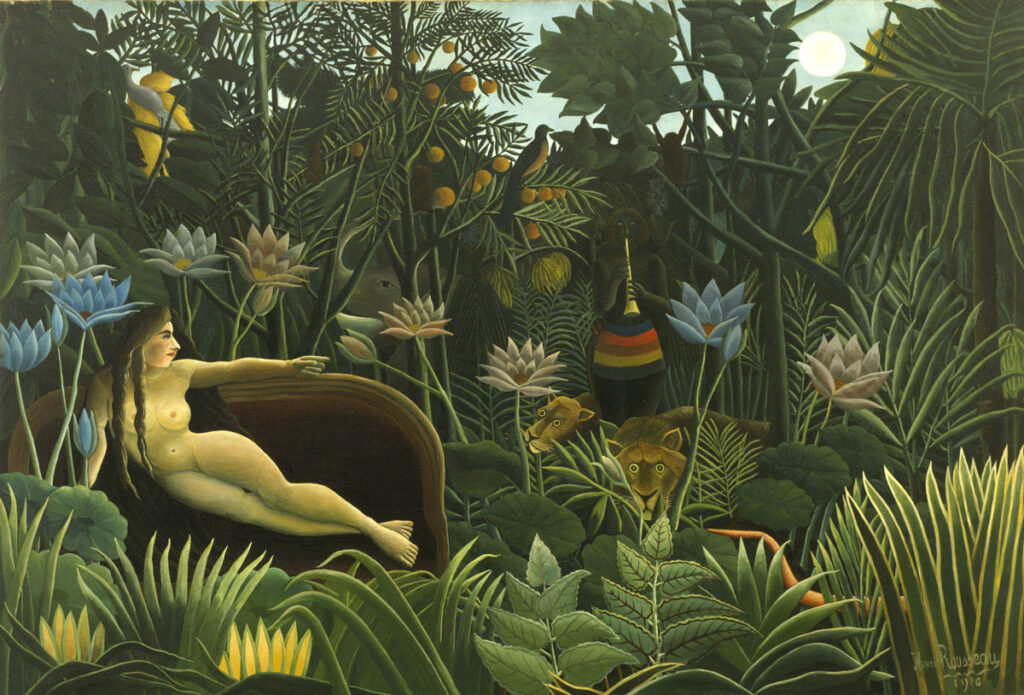
Rousseau and Primitivism
Many Post-Impressionists were drawn to Primitivism in their search for more vivid styles and symbolic content. In this instance, Primitivism refers to the “naive,” self-taught style exemplified by Henri Rousseau who was championed as a pioneer, but it can also refer to the borrowing of non-Western art forms by artists like Picasso and Gauguin.
Rousseau circuitously came to art through sketching to occupy himself at his job in a Parisian train station.
Fascinated with wild animal life in the jungle he never knew, he avidly copied the works in the Louvre‘s collection and arrived at a style that dominated his entire oeuvre.
While Rousseau‘s paintings at first glance appear to present conventional subject matter, the simplified, abstracted forms and surface patterns that merge within the painted images derived solely from his imagination.
Although he lacked any academic training, his evocative landscapes and jungle scenes, such as “The Dream”, relied upon his interpretations of his subconscious, rather than the surrounding world.
His representation of the realm of dreams in a uniquely intuitive style proved highly influential for the Fauves, Cubists, and Surrealists.
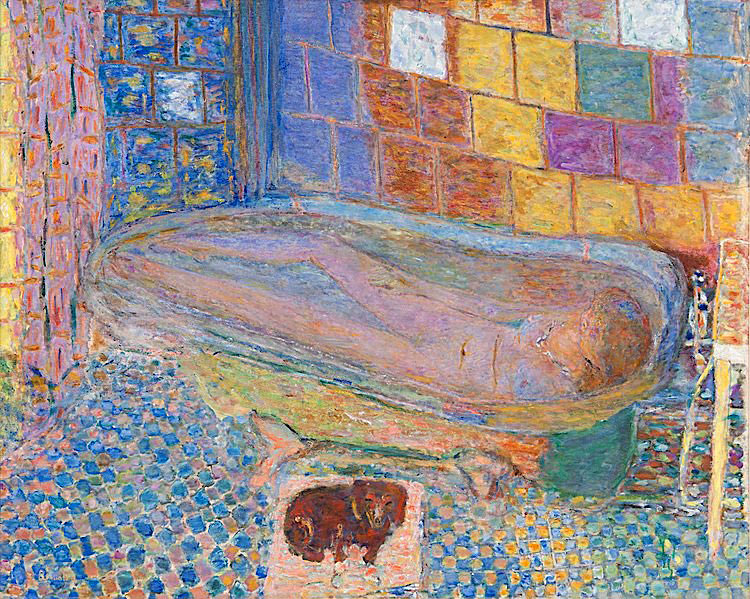
Bonnard and Les Nabis
Influenced by Japonisme, Symbolist painting, and the English Pre-Raphaelites, the group of artists known as “Les Nabis” firmly adhered to idea that the artist must synthesize nature and personal expression within the work of art.
Paul Serusier founded the group and refined the style that came to dominate their production. Influenced by Gauguin, they used paint right from the tube in broad, unmodulated areas of colour, with patterned designs and stylised contours that reflected the subjective vision of the artist.
Painter and theorist Maurice Denis published the essay “Definition of Neo-Traditionism”, in which he stated: ”Remember that a picture, before being a war-horse or a nude or a genre scene, is primarily a flat surface covered with colours arranged in a certain order.”
Les Nabis exhibited together and embraced a variety of media including painting, prints, stained glass and stage sets.
The core membership of the group consisted of Paul Serusier, Maurice Denis, Pierre Bonnard and Edouard Vuillard. Several other artists exhibited and worked with the group at varying times, among them Aristide Maillol and Toulouse-Lautrec.
The name, “Les Nabis,” derived from the Hebrew word for “Prophet” and heralded the group’s core ideology: a blend of mysticism and the inner spirituality of the artist.
Unlike the Impressionists that preceded them and the Fauvist that followed, Postimpressionist artists were not unified by a single aesthetic approach. Rather, what brought them together was a shared interest in openly exploring the mind of the artist.

